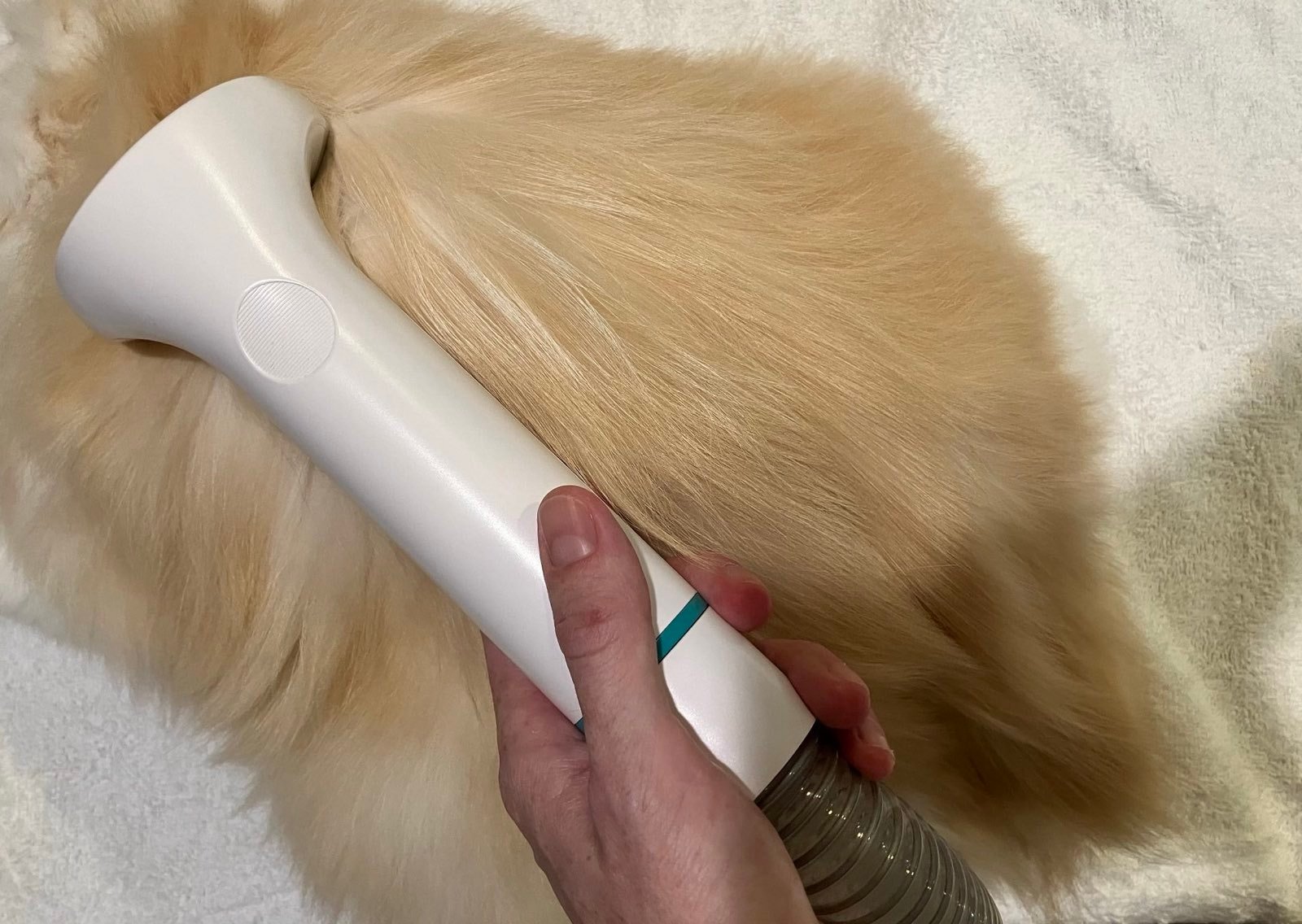
Say Goodbye to
Hairballs
One of the most common reasons people seek out grooming for their cat is hairballs. Hairballs are uncomfortable for your cat and messy for you—but they don’t have to be part of your life! Below are strategies and products that help keep hairballs at bay—pick and choose the ones that make sense for your cat.
Grooming
The best way to keep your cat from getting hairballs is consistent grooming: according to the National Cat Groomers Institute, the recommend cadence is every 4-6 weeks, depending on the length and texture of the coat and the severity of the hairball issue.
Bath
A bath gets rid of oil from the skin (which keeps loose hair sticking in the coat instead of naturally falling out) and also removes much of that loose hair.
Blow-dry
The high-velocity dryer used during the spa day blows out much of the loose fur from the coat, which is extra hair that your cat doesn’t need to swallow.
De-shedding treatment
The most important step of the grooming process for hairball-prone cats is the de-shedding treatment, which is included in every spa day at Cashmere Cat Spa. We use a special de-shedding vacuum, which has a comb attachment that painlessly and quietly sucks out the remaining loose hair from your cat’s coat. You will be amazed at how much old hair we remove from your cat—hair that will not become hairballs.
During a de-shedding treatment, the cats lounge on fluffy towels and wear a bonnet over their ears to reduce sound.
Loose hair removed during a typical de-shedding treatment for a longhaired cat
Loose hair removed during a typical de-shedding treatment for a shorthaired cat
Food, treats, and water
While grooming gets rid of the loose hair in your cat’s coat, there are foods, treats, and supplements that aim to reduce hairballs by helping your cat pass more of the hair through their digestive tract instead of letting it build up in the stomach. It is normal for cats to pass the fur, and you can help them increase the proportion of fur they are passing.
Oil-based/omega-3
Oils help the hair travel through the digestive tract more easily; fish oil in particular also contains Omega-3s that help with skin health. If your cat is overgrooming due to itchy skin (and therefore having extra trouble with hairballs), fish oil can help with both the hairballs and their cause.
Here are products we have used and recommend—and our vets have approved:
Inaba Churu Skin & Coat
Inaba Churu Hairball Control
Nutramax Welactin Omega-3 Fish Oil for Cats
For a budget option, try Hartz Delectables Squeeze Up treats and mix in 1-4 drops of fish oil
There are a number of other oil-based supplements, treats, and foods for cats on the market—ask your vet if you’re unsure which one is best for your cat!
dietary fiber
Fiber also helps the digestive tract scoot hair along instead of collecting in the stomach. Vets frequently recommend a number of different fibers—everything from carrot fiber to psyllium husk.
Your easiest bet is to buy a cat food for hairball control that has the right amount of fiber included. Your veterinarian can recommend which food is best for your cat, or if they recommend adding fiber to treats.
Many cats will also enjoy the most natural option: chewing and swallowing grass! This should be encouraged whenever possible (as long as they are not chewing grasses that have been treated with herbicides or pesticides, which are poisonous to cats).
You can buy cat grass blends at pet stores or online, or you can even pick up a container of living wheat grass from grocery store produce sections.
water intake
Drinking adequate amounts of water is another big factor in helping the digestive system pass hair instead of collecting it. House cats famously hate drinking water due to a number of factors:
Small mammals are mostly water (about 60% of a mouse’s weight is water), and it’s likely that your cat’s ancestors preferred (or needed) to get most of their water from their food.
Cats prefer to drink running water. If your cat is struggling with hairballs, try switching to a water fountain (this will also help prevent a host of health problems down the line).
Our favorite is this one, for its double-filtration system, easy-to-clean stainless steel, low noise, and design that sends the water through a filter directly after your cat’s tongue has touched it (so crumbs and debris don’t get into the pump).
Cats are very sensitive to the taste of water. If you have hard water or aren’t cleaning their water bowl or fountain often enough, your cat might not be drinking as much water as they would otherwise.
We recommend washing water fountains once a week and keeping a silver-ion floaty in the fountain to cut down on bacterial growth during the week. You can find one online by searching for “humidifier cleaner fish.”
If you’re struggling with hairballs and want to discuss details and possible solutions, please schedule a free consultation! We can advise on any part of the above, from getting a cat to drink hard water to how to deal with toothless elderly cats who can’t chew or swallow treats or grass.



